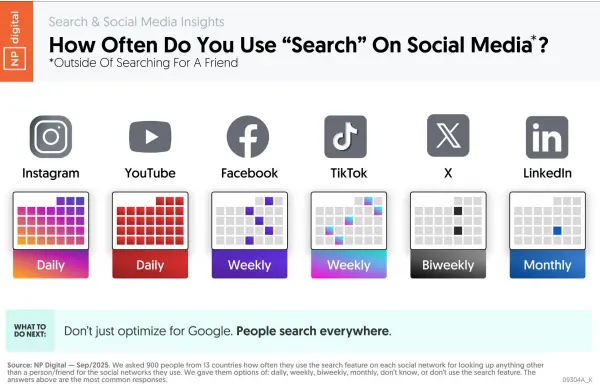Vehicle Subscription Model Gains Traction in Automotive Sector
The vehicle subscription industry is set to benefit from large-scale shifts in mobility, according to research by Coherent Market Insights. Millennials and Gen Z are increasingly moving away from car ownership and embracing the rental trend. Consequently, there has...

The vehicle subscription market is projected to grow to $35.49 billion by 2031, reflecting a remarkable compound annual growth rate (CAGR) of 34.2%. This growth is driven by key trends in the industry. For example, fleets that include electric vehicle (EV) options tend to see higher demand and sales. However, it’s important to note that the transition to EVs comes with its own set of challenges. Stringent EV mandates and ride-sharing policies tend to limit the true growth potential of the vehicle subscription market. Additionally, vehicle subscription providers frequently contend with price wars and lower profit margins, which lead to slow growth or growth only within niche and premium segments. For example, Tesla reduced its subscription prices by half for full self-driving cars to $99 per month to boost demand. As a result, top vehicle subscription providers in this niche often resort to low-profit-margin strategies to increase subscription rates. Despite this downward pressure on pricing, the market was valued at $4.52 billion in 2024. Shifting trends and consumer preferences are fueling the increasing demand for flexible ownership models and hassle-free mobility solutions. Vehicle subscription services present a compelling alternative to traditional car ownership, offering benefits such as no upfront payments, the ability to switch between various vehicles, and included maintenance packages. The growing demand for subscription-based transportation services falls under the Mobility-as-a-Service (MaaS) umbrella. This model alleviates concerns about registration, insurance, and maintenance for consumers. The ultimate advantage is that MaaS is gaining traction among those seeking more affordable and flexible solutions. The vehicle subscription market presents numerous opportunities, particularly for internal combustion (IC) engine vehicles, multi-brand subscription models, and subscription periods ranging from 6 to 12 months. Key trends such as environmental awareness and emission norms are driving the growth of EV subscription services. EVs are becoming increasingly attractive due to their lower maintenance and operating costs. However, significant challenges remain. Brands face stiff competition from car rental and ride-hailing services, and subscription plans are not "one-size-fits-all" solutions. Consequently, regulatory hurdles and regional differences provide ample opportunities for key players to clash. Another notable challenge for market players is consumer hesitation toward committing to long-term subscriptions for newer mobility models. The U.S. leads the market, driven by key players like BMW, Audi, and Mercedes-Benz, which offer attractive subscription plans. In 2023 alone, the U.S. vehicle subscription market was valued at $779 million, underscoring the country’s demand for alternative mobility solutions. Brands like Hertz My Car, offering Tesla Model 3 and Model Y rentals, are capitalizing on the rising demand for EVs. These affordable upgrade plans have significantly increased adoption rates. Regional players are targeting specific market segments to achieve higher returns on investment (ROI). For example, General Motors aims to generate $25 billion in revenue from in-car subscription services by 2030. A key strategy to achieve this high ROI is to make deals uniquely attractive to consumers. Take Porsche, for instance. Who wouldn’t want to drive a new Porsche every day? In 2024, Porsche introduced an on-demand program in Atlanta, allowing residents to access different models daily. These examples highlight a key trend: consumer-centric mobility solutions have evolved from being a unique selling proposition (USP) to a minimum viable product (MVP). To offer value for money, key market players need to diversify the range of vehicles available for subscription and distinguish their subscription models. For a deeper dive, explore Coherent Market Insights' report on the vehicle subscription market, which offers comprehensive data on market size, CAGR for 2024–2031, revenue growth opportunities, market drivers, restraints, trends, and competitive strategies of key players. Coherent Market Insights is a leading market intelligence and consulting firm serving clients in over 150 countries. The firm provides actionable insights across various industries, including transportation, chemicals, healthcare, food and beverages, and more. Offering both granular country-specific data and a global perspective, Coherent Market Insights helps clients sustain growth in mature markets and seize opportunities in emerging markets. The vehicle subscription industry is set to benefit from large-scale shifts in mobility, according to research by Coherent Market Insights. Millennials and Gen Z are increasingly moving away from car ownership and embracing the rental trend. Consequently, there has been a growing emphasis on the vehicle subscription model.
The vehicle subscription industry is set to benefit from large-scale shifts in mobility, according to research by Coherent Market Insights. Millennials and Gen Z are increasingly moving away from car ownership and embracing the rental trend. Consequently, there has been a growing emphasis on the vehicle subscription model.So What’s Driving Future Growth?
Opportunities and Challenges for Market Players
Key Market Opportunities
IC engine vehicles: This segment dominated the market with a share of 65.5% in 2024, driven by availability and lower upfront costs.
Balanced commitment: Consumers preferred subscription periods of 6-12 months, which captured a 45.4% market share in 2024.
Multi-brand policies: Companies offering multi-brand vehicle subscriptions consolidated a market share of 58.9% in 2024.
Regional opportunities: North America held a dominant market share of 36.2% in 2024, while the Asia-Pacific region showed faster adoption rates.
Looking to Invest? Consider the U.S. Market
Where to Learn More
About Coherent Market Insights

 Astrong
Astrong 






























